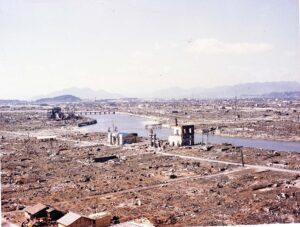Sisi seeks symbolic Suez moment
By Khaled Diab
Suez Canal II is not about economics. It is a symbol of how President Sisi is supposedly navigating Egypt through narrow straits towards modernity.

Wednesday 12 August 2015
Sequels rarely match up to the original, most film buffs will tell you. But judging by the trailers and the blitz publicity campaign, Suez Canal II will be every bit as significant as its predecessor.
Dubbed as Egypt's “gift to the world”, inaugural ceremony for the new channel of the Suez Canal promised to “dazzle the world”. The spectacle included an air and naval show, fireworks, folklore performances and even a performance of Verdi's classic opera, Aida.
On Wednesday 5 August, the front page of the semi-official al-Akhbar newspaper carried an image of President Abdel-Fattah al-Sisi at the helm of a ship steering it through the canal, with smiling citizens waving flags enthusiastically in the background.
The symbolism is clear. The ship is presumably Egypt, the canal is the narrow strait the country is currently navigating, the destination is a brighter future and every Egyptian is firmly behind their president. But with all the pomp, swagger and bluster in the air, perhaps nautical metaphors are not the most appropriate: unseen icebergs and the Titanic spring to mind.
More subtly, the image echoes the propaganda during the presidency of Gamal Abdel-Nasser. For instance, in a nationalist song from 1963, the legendary heartthrob Abdel-Haleem Hafez sang:
Our president is a navigator. He's taking us across.
He's a worker and farmer. He's one of us.
And perhaps behind al-Sisi's surprising choice of megaproject is an unspoken wish that the Suez Canal will propel him to legendary status, as it did Nasser. After all, the canal sealed Nasser's reputation when he nationalised it, triggering the 1956 Suez Crisis, known to Egyptians as the Tripartite Aggression.
The Suez Canal was also important to Anwar al-Sadat, who was often lionised as the architect of the “crossing of the canal” during the 1973 war with Israel. Mubarak did not have a Suez moment but he did have plenty of waterways, from the stalled al-Salam (Peace) Canal to make the Sinai bloom and the Toshka white elephant to create a new Nile valley in the Western desert.
In fact, the Suez Canal has been an important nationalist symbol since its construction. For Khedive Ismail, it was a central plank – along with rapid industrialisation and the new Cairo he built as the “Paris on the Nile” – of Egypt's steady march to modernity.
Symbolism aside, does Suez Canal II actually live up to the hype? Strictly speaking, the megaproject is not a new canal but a 72-km parallel channel to extend the existing one. And it is not even the first such expansion – there were previous ones in 1955 and 1980.
This makes the notion that it is a second Suez Canal and an engineering feat on a par with the first seem ludicrous, considering that the original waterway was 164-km long and completely revolutionised shipping from Asia to Europe by giving vessels a massive 7,000-km shortcut.
In actuality, Egypt, perhaps in light of the rapid de-development of the region, seems to be downsizing its mega-dreams compared with previous generations. But the boastfulness and adulation surrounding them is as grandiose as ever.
That is not to say Suez Canal II is not without engineering merit. Unlike the original French-conceived canal, the new channel was completely designed and implemented by Egypt. Moreover, unlike its predecessor, it did not result in the deaths of tens of thousands of Egyptian forced labourers.
Unlike many previous megaprojects, not only was this project actually completed, it was finished ahead of time, in a record single year, which some have seen as a positive sign for the future. In addition, unlike the original, the expansion is domestically financed, largely through investment certificates sold to citizens, which could act as a promising model for future initiatives.
Unlike in the 19th century, whether it succeeds or fails, Suez Canal II is unlikely to help bankrupt an already highly indebted nation. However, Egypt may have trouble paying back citizens if its projections prove unfounded.
According to government projections, the expanded capacity and faster passage time will propel the canal's revenues from the current $5.5 billion to an astonishing $13.5 billion. Many international and local experts are sceptical this will happen because the canal is currently running at below capacity anyway and the rate of annual growth in global shipping would have to be considerably higher than it is today.
Though they make a strong case and one I find highly persuasive, it is possible the experts are wrong, as officials keep reminding us, and Egypt will confound its critics, as it did in 1956 when everyone expected the country would not be able to operate the canal after removing its British and French management.
Personally, I believe this was a massive missed opportunity. Rather than focus on an initiative of questionable and marginal benefit, the government should have chosen a megaproject of true national importance.
As I've argued before, instead of Suez Canal II, the billions sunk into dredging the desert sand should have gone to shoring up the Nile Delta, which is threatened by rising sea levels and sinking sediment. Although experts have been warning for decades of these dangers, Egypt has taken almost no action to save its breadbasket and home to nearly half its population.
Now that is truly a sinking ship that needs to be navigated to a safe port before it is too late.
____
Follow Khaled Diab on Twitter.
This article first appeared on Al Jazeera on 6 August 2015.


Everything is about money and economics. Can’t have a great future without it….
More debate is available here. https://www.facebook.com/aljazeera/posts/10153633645103690